Buy A New Car
Fuel Prices: New Car?
It’s unfortunate to see that the prices for fuel in Australia have been on the steady increase across. Retailers suggest that the increase in the cost of fuel has come about through record oil prices and new logistical challenges for acquiring the fuel. It’s definitely worth shopping around to ensure that you can get the best price on your fuel at the pump, as prices do differ from retail outlet around town and across States.
Just recently, regular unleaded petrol (91) had a national average of $2.14 per litre, yet the cheapest was found in Carnarvon, Western Australia, where it was sold for $1.59 per litre. The most expensive was located in Derby, Western Australia, where (91) was seen being sold for $2.42 per litre. The same trend is occuring for (95), (98), (E10), and Diesel.
As for how long these high fuel prices will continue to last, fuel industry analysts say that it’s anyone’s speculation at the moment. Peter Khoury, NRMA spokesman, recently said: “These prices are completely off the scale, more than twice what [motorists] were paying in April 2020… We have no idea where we would set the ceiling at this point.”
It begs the question: Should a motorist that has to do quite a few kilometres each week look at purchasing a more fuel efficient car? The answer, I guess, is up to you. It depends on how tight your budget is. If you can afford a new car, or at least a second car that’s extra-miserly on fuel, then I’d say go for it – particularly if you’re having to do high mileages. Then again, if you are not travelling far each week, say to the shops and the occasional trip elsewhere, then staying with the car you have and keeping your travel to a minimum is probably the way to go at this stage, and we’ll sit tight and see where/when all this price rising will come to an end, revising it again in another few months.
You might be a motorist who needs to upgrade for various reasons including the rising fuel costs. In this case, being in the market for a new car and wanting to purchase a vehicle that delivers the best fuel-efficiency has to be a pivotal point of purchase for you. Here is a list of the most fuel-efficient vehicles in 2022 across numerous categories, something that you might find useful right now.
Note – Where “Diesel” hasn’t been mentioned after the model, assume that it’s “Petrol” version…
Small cars (Hatchbacks):
Toyota Yaris Hybrid Hatchback 3.3 litres/100 km
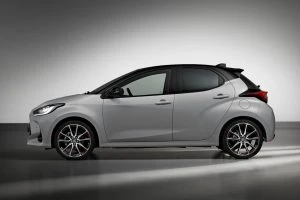
Toyota Yaris Hybrid Hatchback
Toyota Corolla Hybrid Hatchback 4.2 litres/100 km
Toyota Yaris Hatchback 4.9 litres/100 km
Mazda 2 Hatchback 5.3 litres/100 km
Toyota Corolla Hatchback 6.0 litres/100 km
Mazda 3 Hatchback 6.2 litres/100 km
MG3 Hatchback 6.7 litres/100 km
Hyundai i30 Hatchback 7.4 litres/100 km
Family & fleet (Sedans):
Toyota Camry Hybrid Sedan 4.7 litres/100 km
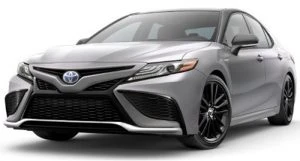
Toyota Camry Hybrid Sedan
Toyota Camry Sedan 6.8 litres/100 km
Small-Med SUV
Toyota RAV4 Hybrid 2WD 4.7 litres/100 km
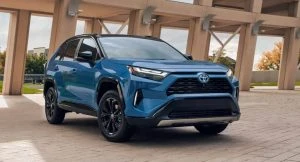
Toyota RAV4 Hybrid
Toyota RAV4 Hybrid AWD 4.8 litres/100 km
Mazda CX-3 2WD 6.3 litres/100 km
Mazda CX-30 2WD 6.5 litres/100 km
Toyota RAV4 2WD 6.5 litres/100 km
Mazda CX-5 2WD 6.9 litres/100 km
Toyota RAV4 AWD 7.3 litres/100 km
Mazda CX-5 AWD 7.4 litres/100 km
Mitsubishi Outlander 2WD 7.5 litres/100 km
Mitsubishi Outlander AWD 8.1 litres/100 km
Large SUV
Toyota Kluger Hybrid AWD 4.7 litres/100 km

Toyota Kluger Hybrid AWD
Hyundai Santa Fe AWD Diesel 6.1 litres/100 km
Kia Sorento AWD Diesel 6.1 litres/100 km
Toyota Prado 4WD Diesel 7.9 litres/100 km
Mazda CX-9 2WD 8.4 litres/100 km
Toyota Kluger 2WD 8.7 litres/100 km
Toyota Kluger AWD 8.9 litres/100 km
Toyota LandCruiser 300 Diesel 8.9 litres/100 km
Mazda CX-9 AWD 9 litres/100 km
Kia Sorento 2WD 9.7 litres/100 km
Hyundai Santa Fe 2WD 10.5 litres/100 km
Nissan Patrol Y62 14.4 litres/100 km
Ute
Nissan Navara STX 4WD Diesel 7.8 litres/100 km

Nissan Navara STX 4WD Diesel
Toyota HiLux SR5 4WD Diesel 8 litres/100 km
Ford Ranger XLT 4WD Diesel 8 litres/100 km
Isuzu D-Max XT 4WD Diesel 8 litres/100 km
Mazda BT-50 SP 4WD Diesel 8 litres/100 km
Mitsubishi Triton GLX+ 4WD Diesel 8.6 litres/100 km
Ford Ranger XLT 4WD Diesel 8.9 litres/100 km
LDV T60 Max 4WD 2.0L Diesel 9.2 litres/100 km
GWM Ute 4WD 2.0L Diesel 9.4 litres/100 km
Toyota HiLux Workmate 2WD 10.9 litres/100 km
Ram 1500 DS Limited 12.2 litres/100 km
Ram 1500 DT Express 12.2 litres/100 km
Chevrolet 1500 LTZ 12.8 litres/100 km
Van
Hyundai Staria Load van Diesel 7 litres/100 km
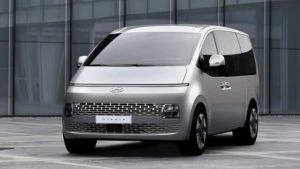
Hyundai Staria Load van Diesel
Ford Transit Custom van Diesel 7.3 litres/100 km
Toyota Hiace LWB van Diesel 8.2 litres/100 km
LDV G10 van Diesel 8.2 litres/100 km
LDV G10 van 11.1 litres/100 km
Toyota’s Hybrid vehicles, if they suit you needs, top their classes with fuel bills that were roughly half their nearest rivals. The Hybrid versions of the Toyota Yaris Hatch, the Toyota Corolla Hatch, the Toyota Camry Sedan, the Toyota RAV4 SUV, and the Toyota Kluger are the ones I’m talking about here.
Decoding the Differences Behind a Name
If you’re on the lookout for a new car, you may have noticed that not all cars with the same name are equal. It goes without saying that some are cheaper than others. What’s behind this difference? Well, manufacturers often produce different “variants” within a model range.
This is a way of increasing a brand’s sales potential across a particular model. Usually, there are three main variants, but this has changed in recent times amid the greater emphasis on SUVs. Notably, this excludes other variables like body type (sedan versus station wagon), or short wheelbase versus long wheelbase. However, these variants often come with different levels of amenity and luxury. Usually, the differences are indicated by a set of letters or numbers, sometimes a particular badge or sub-name may be incorporated into the fold.
When it comes down to the differences, most of it boils down to variations either under the bonnet or inside the cabin. Occasionally, the high-end variants also boast some exterior touches that make it look a bit different from the others. Now, if you are on the hunt for a new car, the difference between the variants usually means different prices – potentially pushing out of reach your dream car.

So what sorts of things usually make up the difference between entry-level and top-spec variants? Here are a handful of differences that you can expect:
- The interior trim: The entry-level variants usually have a cloth finish whereas the top-tier variants usually incorporate leather, suede or a better quality of cloth.
- Features and technology: The top-spec variants usually have a few more gadgets and conveniences (e.g. electrically adjustable mirrors, adaptive cruise control) that the more affordable variants miss out on. This is a big consideration, and this is one of the main ways that variants differ.
- Engine: Often, the more powerful engines are reserved for the more premium variants. While a high-end variant warrants top performance, the good news is that entry-level variants are typically more frugal when it comes to fuel costs.
- Safety: And lastly, while progress is certainly being made in this area, there is sometimes still a difference in terms of safety features between the variants in a line-up. This isn’t to say that the entry-level variants are unsafe, but they may have fewer airbags or fewer active safety features.
Ultimately, do your homework so you know what you are bargaining for. If safety or performance or features are important to you, and the premium variants offer better options in this regard, you might have to stretch your budget a little further to ensure you walk away with a car you’ll love forever.
Getting More Life out of your Car
Whether you’ve just picked up a brand new car, or you’re looking to preserve the resell value for a car that you may trade-in at some point in the future, it’s always wise to extend the life of your car.
However, with daily events that take place in our lives, this issue often falls behind more immediate and pressing matters. As the potential resell value on your car can have a notable impact on future financing options available, consider these five tips to extend the life of your car.
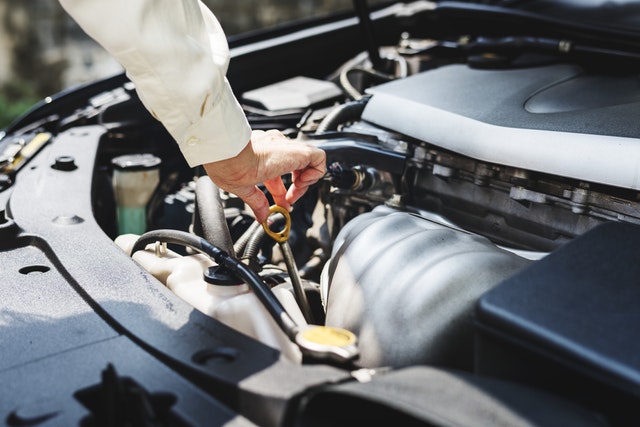
Maintain a regular service schedule
Your car should always be maintained in accordance with the service schedule prescribed by the manufacturer – typically, the earlier between every 10,000km or every 6 months. Some auto-makers have longer servicing intervals, which are effectively double those mentioned. Servicing your car at the appropriate intervals addresses standard maintenance issues concerning fluids and filters, which are swapped out.
Furthermore, it’s also a proactive measure to get on top of potential mechanical issues before they arise by identifying any concerns. Keeping a service logbook is also indicative to future buyers that you have maintained the car well, meaning you can preserve value.
Refrain from repeat, short trips
Although you may think that short trips don’t contribute much in the way of wear on an engine, it is the oil, ignition and muffler systems that come under particular stress from the higher incidence of ‘start ups’.
Make sure you change your oil more frequently if you perform lots of short trips. Ignition related wear arises from certain components being more relied upon when activated, while the muffler comes under wear when it doesn’t heat up enough to cause condensation to evaporate, which is a potential cause of rust.

Maintain adequate tyre pressure
It’s one thing to ensure that your wheels are aligned and rotated correctly, but if your tyres are not operating at an adequate pressure level, there may be an additional burden on the tyres themselves.
This means they are more likely to need earlier replacement. At the same time, you’ll also consume a larger level of fuel. It’s not only under-inflation you need to worry about – over-inflation can lead to a loss of grip on the road. Finally, make sure tread depth is within the parameters of the law.
Watch your brakes
One of the most critical systems of your car, the brake system extends beyond the pads to also include the rotors, callipers and sensors. Ensure that these parts are in good order, seeing as their wear, or failure, can increase the risk of an accident. Look for any signs of corrosion or rust, which may serve as early warning signs.
Make your next car electric
A growing number of motorists are opting for the next-gen format of vehicles, be it hybrid or fully-electric vehicles. While these cars are prone to repairs themselves, as you would expect from any car, the signs are certainly promising that electric vehicles will have a long life due to not being vulnerable to engine issues.
You can expect an EV to last as long as the battery does, and now there is a wealth of information suggesting this could be as long as your internal combustion car, if not much longer.
What to Look for in a Family Car
The humble family car has become central to the everyday life of Australians right around the country. Whether it’s the school run, day trips or weekends away, you want to ensure that you have a vehicle that is cut out for the task.
With that, there are certain traits that endear themselves well when it comes to picking up a great family car. We take a look at some of these key features so that you know what to look for when searching for your next family car.
First-rate safety technology
When it comes to the family car, this is one area you don’t want to sacrifice. After all, nothing is more important than the wellbeing of your family, so it only makes sense to see to it that you protect them in every which way.
Opt for a vehicle that has a five-star ANCAP safety rating. These cars have passed strict testing to ensure they are among the safest vehicles on the road. You’ll also want to make sure that the car is equipped with the latest safety technology, including the likes of ABS, AEB, lane-departure and lane-keep assistance, blind-spot monitoring, rear-cross traffic alerts, reversing cameras and more.
Spend a little more on these areas, it doesn’t hurt to be safe and secure.

Comfort, amenity and space
For those long trips on the road, who doesn’t value a bit of extra comfort and leg room to keep everyone happy?
While the value of having additional seating cannot be overlooked – and it’s something we’ll touch on shortly – it’s also important to have space that allows everyone to be at ease.
Look for supportive and ergonomic seating, large windows (with sunshades) that afford rear-seated occupants plenty of visibility, and also rear climate control. Happy family, happy life!
Entertainment
As technology has become so ingrained in the latest vehicles, an increasing number of cars are equipped with fantastic entertainment options.
This includes in-car entertainment systems with rear-screens, but just as important – given our dependence on mobiles – is smartphone integration. It goes without saying, make sure there are plenty of ports available to recharge those mobiles as well!

Practicality
As a family you’ll often head out for a variety of purposes. This means that you’ll need a car with practicality to allow for such flexibility. Whether it be off-roading capabilities to help you embark on those camping plans, additional boot space for the kids’ sports gear, or compartments to keep all those extra items you need at hand, there is great value in searching for a car that is as much an ‘all-rounder’ as anything.
Extra seating
Earlier we briefly touched on the trade-off that comes with extra seating and leg room for everyone. Of course, it’s great to have capacity for up to 8 occupants, but if that means cramped conditions, no one will enjoy that. Fortunately, many of the latest SUVs and people-movers include third-row seats that can be configured and folded away when you don’t need them. The perfect solution to balance that predicament!
There you have it, these are the key things to look for in your next family car!